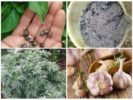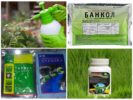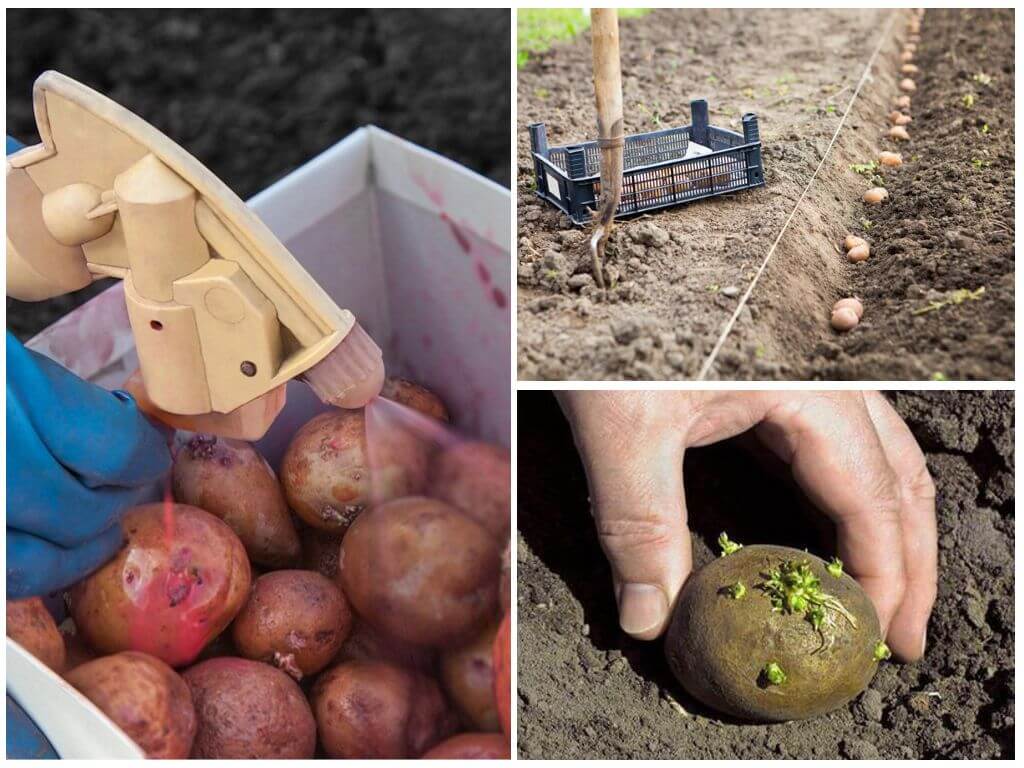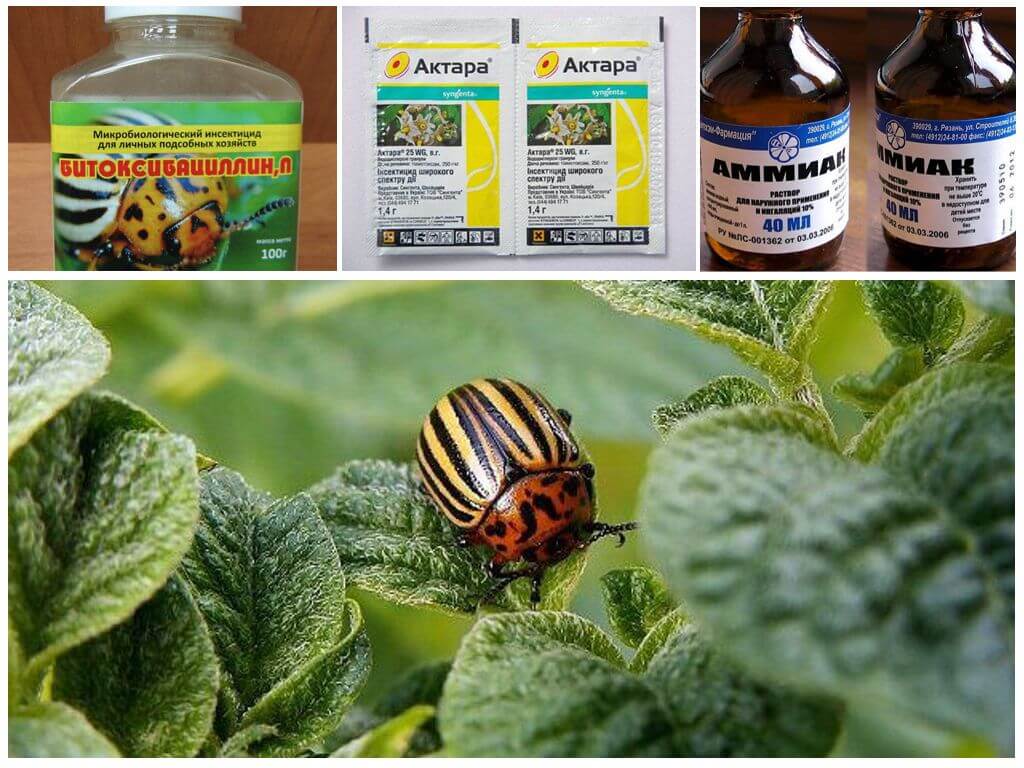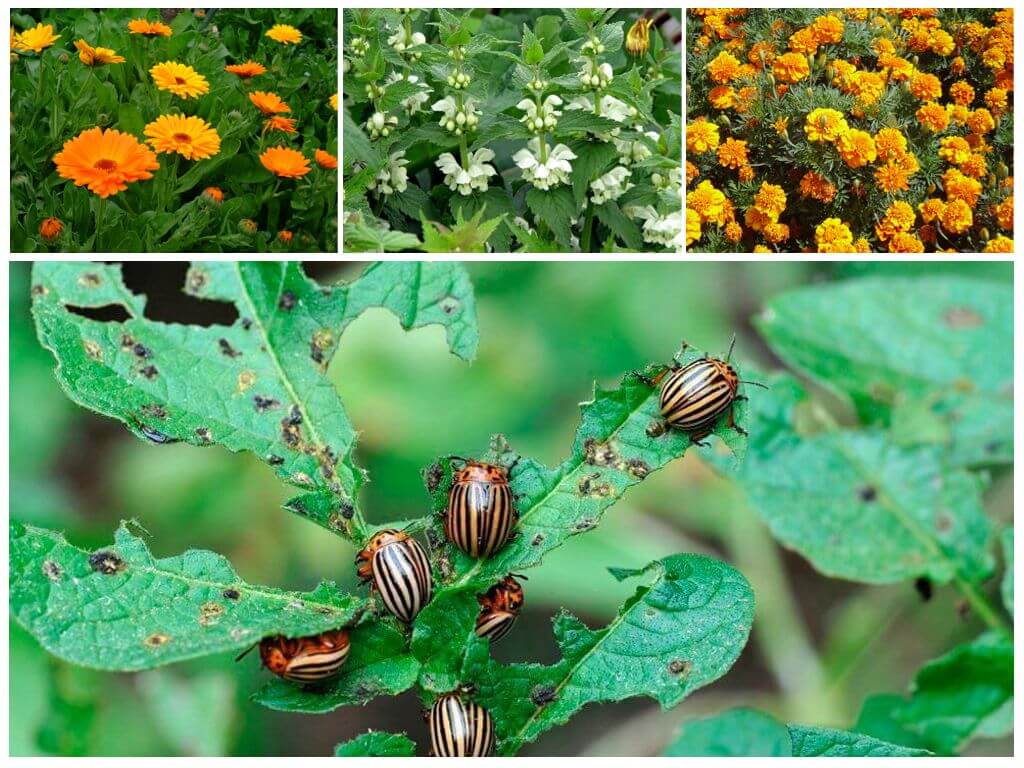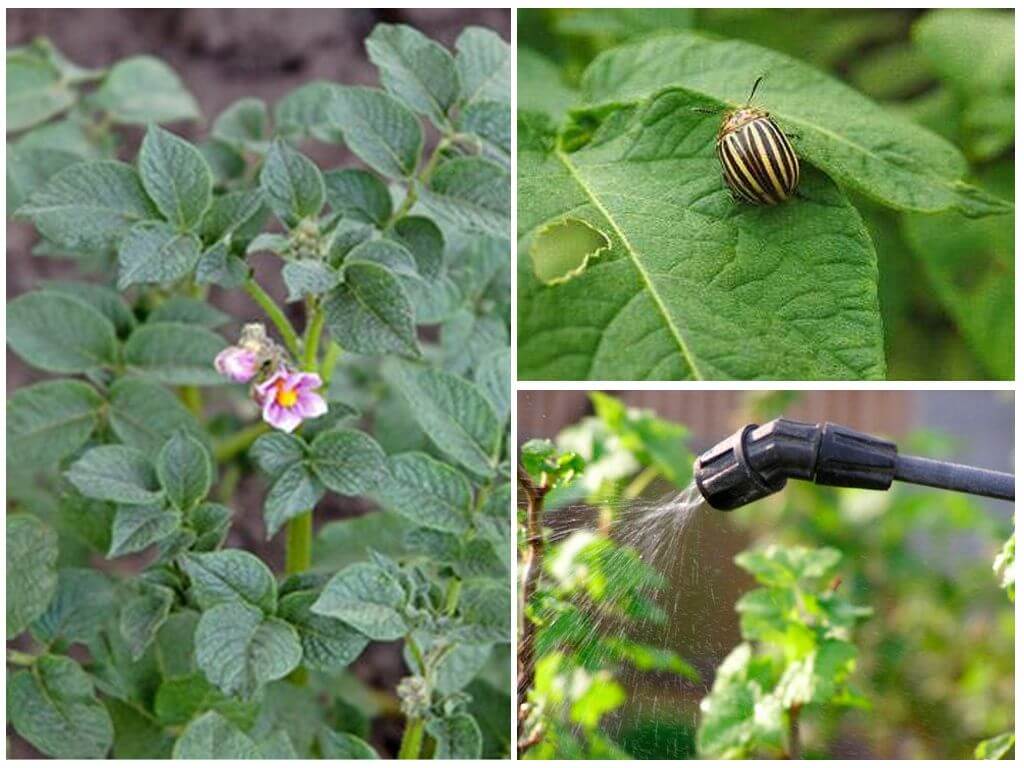- Colorado potato beetle on tomatoes
- Folk ways of struggle
- Chemicals for the destruction of beetles
The invasion of overseas striped guests can cause the greatest harm to plants in the nightshade family. The problem of how to deal with the Colorado potato beetle on tomatoes can be solved both by folk methods and by chemical means.
Harm from beetle on tomatoes
Striped pests were brought to Europe from North America, where they became famous in the late 18th century, destroying almost completely the potato crop in Colorado. It is for this "feat" that they got their name "Colorado" beetle. Insects prefer to eat plants of the nightshade family, which include: potatoes, eggplant, tomatoes, bell peppers and physalis.
Most dangerous for young growing tomato bushes Colorado beetle after he lays his eggs on the tops, from which later red worm-shaped larvae appear with spots on the sides. These gluttonous creatures are able to eat large amounts of green leaves, which is dangerous for tomato seedlings due to its possible damage.
On a note!
The larvae of the Colorado potato beetle are able to completely destroy the tomato bush in 20 days, then move to the neighboring one and continue their “devouring” activity. Later, they fall to the ground, where they pupate, and after 1.5 weeks a new generation of "colorado" appears. The warmer the climate, the more time it takes to go through the life cycles of these insects, sometimes up to 4 a year.
At the next stage, adult Colorado beetles who have grown up eat tomatoes in the second half of summer, when fruits have already begun to take shape on the bushes. They actively eat leaves and ovaries, and in such a situation, plants need constant effective protection by any means.
Beetle Fighting on Tomatoes
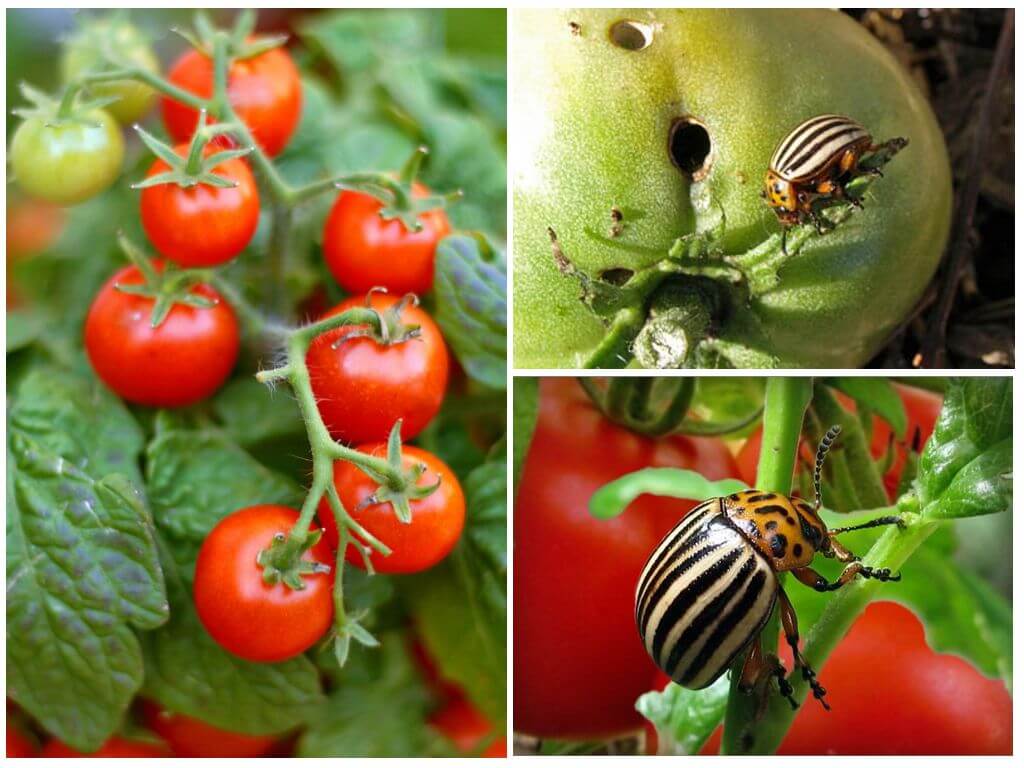
Due to good adaptability, high breeding rate and exorbitant appetite of larvae and beetles themselves, the struggle with it in the garden is very difficult. However, many gardeners are trying to protect tomatoes without chemicals from the invasion of "Colorado" in order to get an environmentally friendly crop.
The main methods of control, which should be carried out regularly and persistently:
- manual collection of larvae and beetles from tomato bushes;
- agrotechnical method, including actions to increase the resistance of plants to pests: regular loosening of the soil, digging in the fall, changing the place of planting, choosing varieties that beetles eat less;
- application folk remedies and solutions for spraying plantings;
- the use of modern chemical preparations.
Protective and agricultural practices include ways to get rid of Colorado beetles without the use of chemistry and other means:
- when digging a plot for nightshade crops, it is necessary to carefully choose dry plant residues;
- taking into account that beetles hibernate in the ground, in the spring it is recommended to lay out bait in the form of pieces of raw potato, on the smell of which insects come out hungry after winter, then they must be collected and destroyed;
- when the first larvae appear on young plants, you can start collecting them manually.
Folk ways of struggle
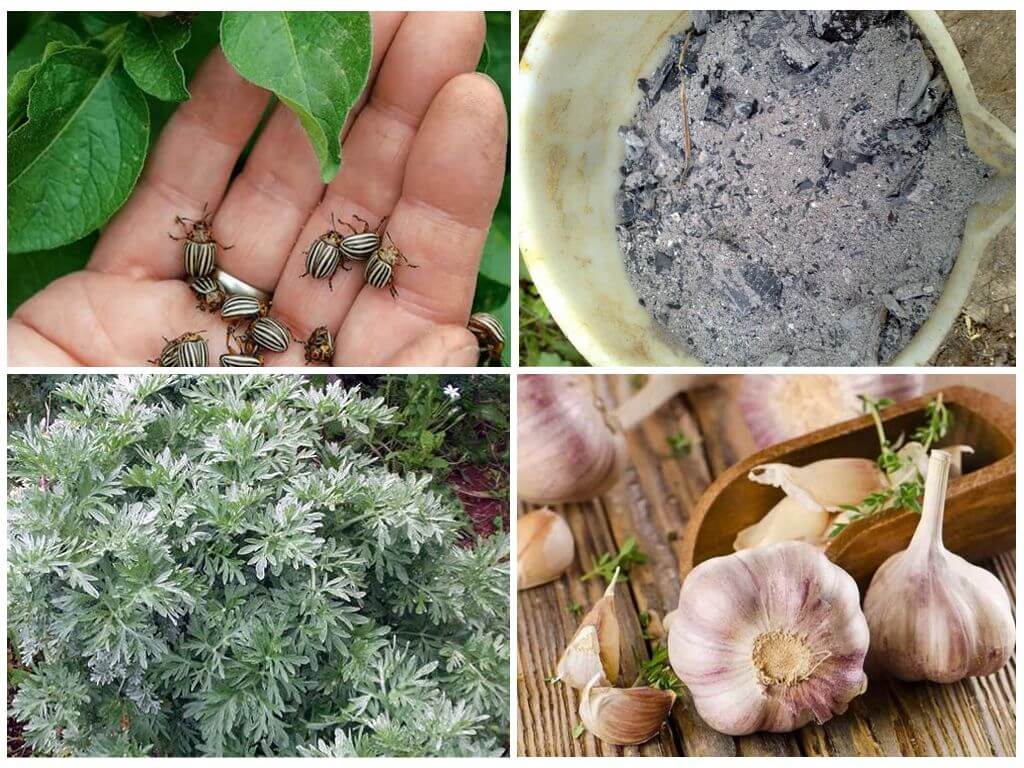
For many years pest control invented and tested many folk remedies for the Colorado potato beetle on tomatoes and other nightshade crops.
These include:
- Preparation of a poisonous solution from adult "Colorado", for which a liter can of adult beetles collected from the garden is poured into a bucket and 20 liters of water are poured. When the insects die and sink to the bottom, you need to insist the solution for another week. For spraying, only freshly prepared solution is used, previously diluted with water in a ratio of 1: 1 or 1: 2 and tested on some bushes, because different varieties of tomatoes react differently to poison. The remaining plantings are treated with solutions of the concentration that turned out to be the most acceptable.
- Another proven tool is the use of wood ash, better than birch ash: first it is poured into the holes when planting seedlings; during flowering, it is recommended to pollinate plants with ash sifted through a sieve in a proportion of 1 kg per 10 square meters of the garden. The procedure is best done after rain or morning dew, only 3-4 times a season.
- Spray tomatoes with an infusion of 1 tbsp. sifted wood ash and 200 g of fresh leaves of wormwood, which are poured with boiling water, then insist 2-3 hours and filtered before processing the tomatoes.
- You can also spray tomato bushes with a mixture of 500 g of chopped wormwood leaves, 1 tbsp. wood ash 1 tbsp. l soap, pour everything in a bucket of hot water and insist 3-5 hours
- To protect tomatoes from beetles will help planting in rows of rows of beds with tomatoes of odorous plants: garlic, calendula, legumes, nasturtiums, etc.
- Mulching tomato rows between straws, in which predator insects are able to eat Colorado beetles: ground beetles, ladybugs, praying mantises, spiders, etc. This method also helps to preserve moisture in the soil and reduce the possibility of weed growth.
- For spraying, you can use decoctions of celandine with the addition of calcium chloride, as well as decoctions of white acacia bark or walnut leaves.
Important!
When processing tomatoes with various herbal infusions and decoctions, it is recommended to alternate them with other methods of control.
Chemicals for the destruction of beetles
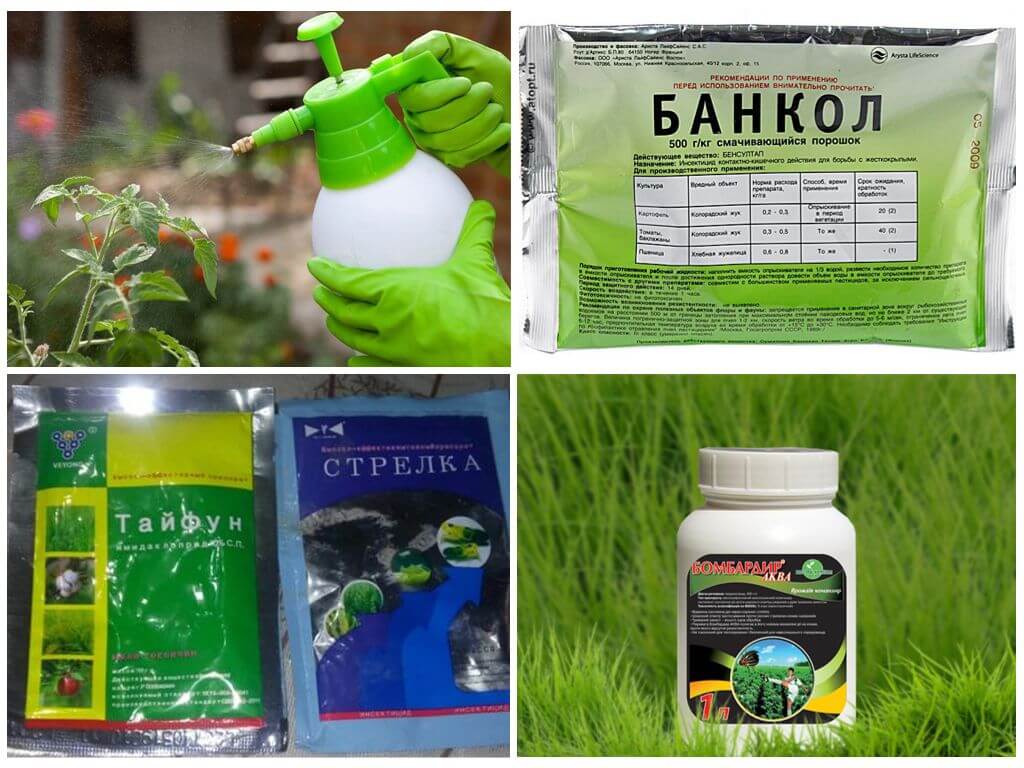
In order to destroy the larvae and adult Colorado potato beetles, experts recommend processing tomatoes from the Colorado potato beetle with such insecticidal preparations:
- Bankol is a popular tool that helps to eradicate many pests on plants; poison acts when it enters their digestive system, causing immobilization and death within 3 days after treatment. According to the instructions, to obtain a solution, 5 g of the substance is diluted with 10 l of water, this volume should be enough to process 0.5-1 hundred parts of the garden.
- Bombardier is a powdery preparation effective against the Colorado potato beetle on tomatoes and potatoes, codling moths, aphids and other insects, the penetration of which causes damage to the nervous system and death.
- Typhoon poison contains insect-acaricidal substances, which helps protect fruit and vegetable crops from many pests; a working solution is obtained by diluting a bottle of the product in 20 liters of water.
- Commander - a drug of contact-intestinal action (imidacloprid), which allows you to effectively poison the Colorado potato beetle and its larvae. It can be applied in 2 ways: by spraying tomato bushes and when applied to the soil, it is produced in ampoules; after processing, the toxic substance penetrates the tops, by eating which, the pests lose their ability to move and die.
Important!
All listed chemicals can be used only with the observance of protective measures: the preparation of the solution and spraying must be carried out in protective clothing, wearing a respirator and gloves. After its application, you need to thoroughly wash your hands, face, rinse your mouth.
The disposal of tomato and potato bushes from the Colorado potato beetle and its larvae is possible only by using successively different methods of control throughout the entire vegetative growth of plants.

